9 min read
A List Of Common Spring Weeds
By: Shawn Karn, The Grass Expert on May 17, 2018 3:29:53 PM


Look out, readers! Spring has spring but so have the pesky weeds.
Weeds are the epitome of persistence, that's for sure. Even for the most dedicated and diligent homeowners, the onset of spring often means that weeds will sprout up and try to make their home on lawns across the country. Luckily, we at Nutri-Lawn have tried-and-true solutions to all the pesky weeds on this list. Just keep reading to find out!
Here's our list of the top 6 broadleaf weeds found in Canadian lawns this spring.
Dandelions
Verdict: Easy to Control
Let's start with the obvious choice. Dandelions are probably the most recognizable broadleaf weed in North America, and the onset of Spring is often characterized by bursts of bright yellow all over the place.
Dandelions can be identified by their bright yellow blossoms, followed by a white puffball seed head. Seeds are then disseminated by wind, mowing, or foot traffic.
The humble dandelion is a perennial broadleaf weed with a thick, deep, central taproot. This makes them a little harder to control by cutting or hand pulling, as it can be difficult to make sure the entire root has been removed. If the entire root hasn't been removed, the dandelion will quickly grow back or a large hole where the roots have been pulled will be left in your lawn.
Even in the most well-nourished lawns, dandelions can be very competitive. It's best to treat dandelions after they have grown or while they are actively growing.

Broadleaf Plantain
Verdict: Hard to Control
Another common weed in Canada is the Broadleaf Plantain, which primarily grows from June to September. This weed is typically found in areas that are moist, or in compacted, alkaline soils.
Broadleaf Plantains have a dense fibrous root system which allows them to survive low mowing heights. The leaves develop in a rosette, and are large and oval-shaped with prominent parallel veins. The seed head appears as a spike stalk that can grow to more than 6 inches in length when left unmowed.
With synthetic weed control products, Broadleaf Plaintains can be easy to control, however that option isn't always available in certain parts of Canada. Natural products offer suppression as opposed to control.
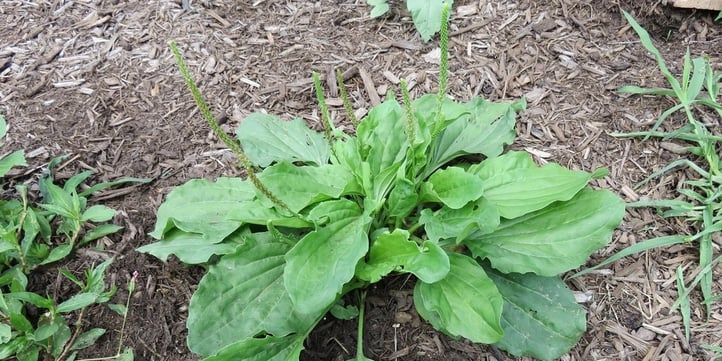
Ground Ivy aka Creeping Charlie
Verdict: Hard to Control
Ground Ivy is commonly known as Creeping Charlie to both homeowners and industry professionals. It's an aggressive, low growing perennial broadleaf weed that grows and fills in like a mat. It favours moist, shaded areas that are maintained at a low height of cut, but can also tolerate full sun conditions.
Ground Ivy has a minty smell when freshly cut or crushed. It flowers for a short time during Spring with orchid-like purple flowers.
Creeping Charlie can be very difficult to control. It spreads by above ground stolons that allow it to quickly fill in voids across the lawn and crowd out surrounding turf. Hand weeding is not an effective method of removal as the stem and runners can be several feet long. The stems are square-shaped and the leaves are characterized by their coin shape with rounded teeth along the margins.
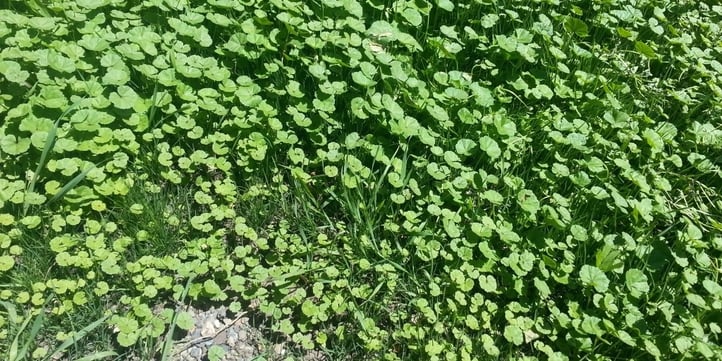
White Clover
Verdict: Hard to Control
Commonly known as the Shamrock, White Clover features 3 oval-shaped leaves that together grow from the central stem, making up the famous shamrock symbol. It's estimated that for every 10,000 three-leaf clovers, one lucky person will find a four-leaf one.
White Clover is a very low growing broadleaf weed. White and pinkish flowers grow and bloom as the plant ages, making it much more obvious in a lawn when the clover is flowering. White Clover typically creeps its way through the lawn, growing in patches, and multiple layers under the canopy of the turf. This makes it very challenging and difficult to control given its growing nature. Multiple weed control applications are required throughout the season to help eliminate this weed.
Although some homeowners might not want White Clover in their lawns, others actually plant White Clover in place of grass. That's because it is a naturally dense ground cover that keeps it's green colour, reducing the maintenance, water, time, and money required to maintain a healthy lawn.
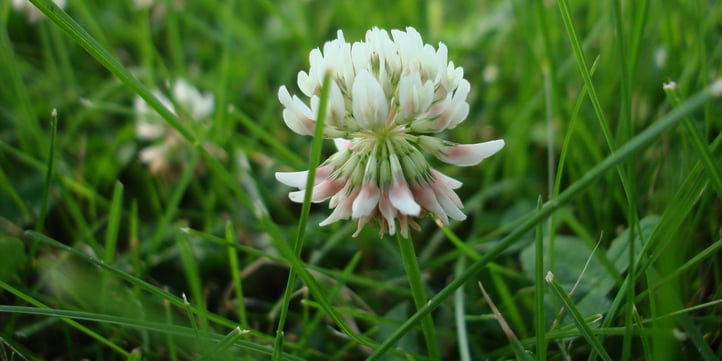
Canadian Thistle
Verdict: Easy to Control
This weed is characterized by it's wavy, lobed, and spiny leaves. The prickly spines can cause irritation when touched and can be pretty painful on bare feet. They can also create pinkish-purple flowers.
The Canadian Thistle is a perennial broadleaf weed with a tendency to spread rapidly. It's extensive rhizome root system means it can reach heights or more than 4 feet in unmaintained areas. It can also spread by seed.
Having said that, Canadian Thistle can be relatively easy to control. Both natural and synthetic weed control products work well, and manually stepping on the plant and twisting it (as you would a cigarette butt) makes them easy to remove by hand. Make sure you remove all the roots to make help prevent them from growing back.
Improving your soil's fertility will give grass a better ability to compete with Canadian Thistle.
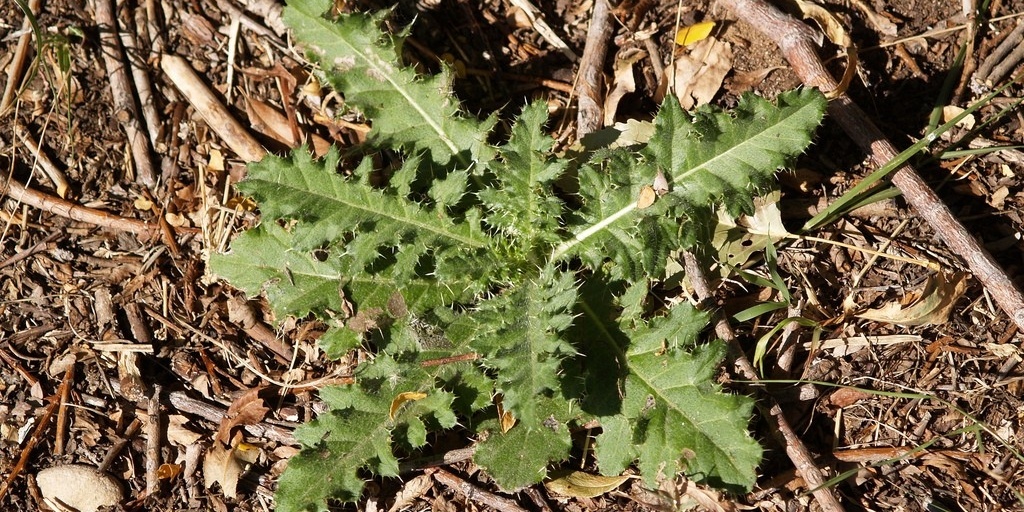
Wild Violet
Verdict: Hard to Control
Wild Violet is another perennial broadleaf weed that favours shady, moist areas but can grow in full sunlight, too. Identifed by their heart-shaped leaves, they tend to cup towards the petiole and have rounded teeth on the margins. Their flowers have three lower petals and two lateral petals, ranging from blue, purple, to white in colour.
Wild Violets generally appear from March until June. The surface of the leaves have a waxy coating which make it difficult for control products to penetrate and be effective. Selective post-emergent weed control products can help minimize and eliminate them, however it can take several seasons to effectively eliminate an existing infestation.
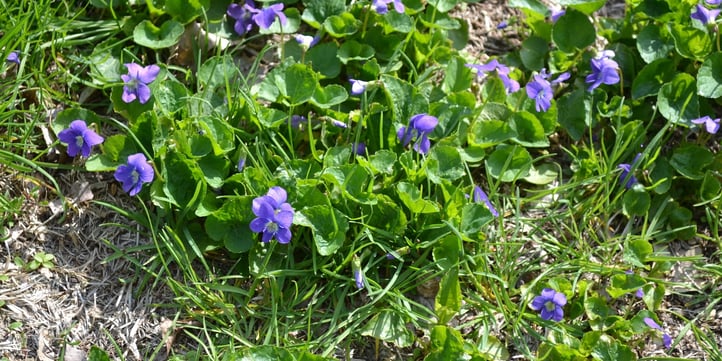
Dealing With Broadleaf Weeds
Whenever you see a weed, best practice is to manually remove it, and add soil and seed to the site if you're left with an empty space. This will help stop weed seeds from getting established in these spots.
Hand pulling weeds to will only address the present weed problem, but does not address the source of the problem. Removing weeds by hand does not prevent or discourage new weeds from getting established.
The best way to avoid your lawn becoming infested with weeds is to maintain a thick and healthy lawn that outcompetes weeds. This includes regular, seasonally-timed fertilizer, annual core aeration and overseeding, and proper mowing and wateringtechniques.
READ > Your Best Defense Against Weed Infestations
Hand pulling weeds or spot spraying them are tactics you could try, but if the problem is a little further along the line, then blanket spraying weed infested areas might be your best bet.
Your weed control options can differ greatly depending on where you are in Canada. Traditional 3-way herbicides such as Killex are generally very effective and extremely predictable in their mode of action.
Traditional weed control options are still available in some provinces for managing broadleaf weeds, however in other regions of Canada, natural broadleaf weed control products such as Fiesta Weed Control are the only effective products available for use. Fiesta is iron-based and kills weeds through iron toxicity.
Although natural products can be effective, especially when combined with the correct cultural practices, they do not have as broad a spectrum of control as traditional products, and thus some weeds cannot be eliminated using natural weed control products on their own. Additionally, natural products can be unpredictable due to their performance being affected by weather conditions.
Related Posts
6 Common Spring Weeds & How To Deal With Them
Just when you thought life couldn't be better with all the warmer weather, out come the Spring...
Fiesta Weed Control: Does It Work For Your Lawn?
When it comes to curb appeal, a beautiful green lawn beats a weed infested one any day of the...
Your Best Defense Against Weed Infestations
The best natural defense against weeds is maintaining a thick and healthy lawn that is capable of...



